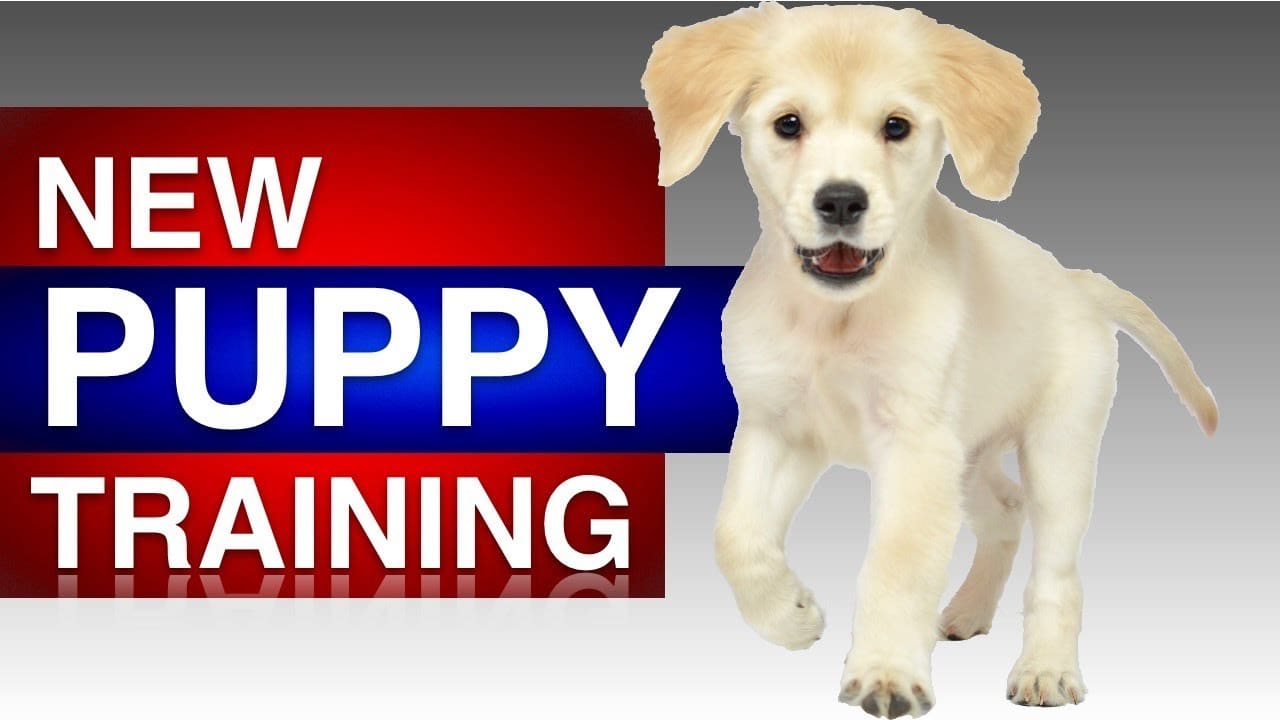Puppy Training
Puppy Training 101: Expert Tips for Raising a Happy, Healthy Pup
Puppy Training 101: Expert Tips for Raising a Happy, Healthy Pup By Will Bangura, M.S., CBCC-KA, CPDT-KA, (Dog Behaviorist,) Certified Behavior Consultant.
Welcome to Puppy Training 101! This blog post contains helpful tips and tricks from experts to help you raise a happy and healthy puppy. Whether you are a first-time puppy owner or a seasoned pro, these puppy training tips will help you get the most out of your new four-legged friend.
We’ll start by discussing when you should start training your puppy and then move on to some basic puppy training tips. We’ll also cover how to teach your puppy to stay, come when called, walk on a leash, and potty outside, and train your puppy to stop barking, chewing, jumping, and digging. So, let’s get started!
Introduction to Puppy Training 101.
Puppies are adorable and energetic, but they can also be a handful. Without proper training, they can quickly become destructive and cause chaos in the household. That’s why it’s important to start training your puppy as soon as possible.
Puppy training teaches your puppy the basics, like potty training, obedience training, and socialization. With patience, consistency, and a little know-how, you can have a well-trained puppy in no time.
What Age Should You Start Training Your Puppy?
Regarding puppy training, the earlier you start, the better. Puppies can learn basic commands and behaviors as early as eight weeks old. However, it’s important to remember that puppies’ brains are still developing during this time, so it’s best to keep training sessions short and sweet.
When your puppy reaches 4-6 months old, it’ll be more able to focus and learn more complex behaviors. At this stage, you can start introducing more advanced commands and tricks.
Being patient and consistent when training your puppy is important regardless of age. Puppies learn best when rewarded with treats, toys, and verbal praise.
Basic Puppy Training Tips.
Now that you know when to start training your puppy, let’s move on to some basic puppy training tips. Here are a few things to keep in mind when training your pup.
- Keep training sessions short and sweet. Puppies have short attention spans, so keeping training sessions to 10 minutes is best.
- Start with basic commands. Start by teaching your puppy the basics like “sit,” “stay,” and “come.”
- Use positive reinforcement. Reward your puppy with treats and verbal praise when they do something right.
- Be consistent. Use the same commands and cues each time you train your puppy.Be patient. Training your puppy takes time and patience, so don’t get frustrated if they don’t learn commands immediately.
Puppy Training 101: Expert Tips for How to Teach Your Puppy Basic Obedience Commands.
How to Train Your Puppy to Sit.
Teaching your puppy to sit is one of the easiest commands to learn. Here’s how to do it.
- Start by getting your puppy’s attention.
- Show your puppy a treat and hold it above their head.
- When your puppy sits, give them the treat and verbal praise.
- Gradually add the command “sit” in a clear, firm voice.
- Give your puppy a treat and verbal praise when they sit on command.
How to Train Your Puppy to Lie Down.
The lie-down command is a bit more complicated than the sit command, but it’s still a useful skill for any well-trained puppy. Here’s how to do it.
- Start by getting your puppy to sit.
- Show your puppy a treat and hold it in front of its nose.
- Slowly move the treat towards the ground and say the command “down” in a clear, firm voice.
- When your puppy lies down, give them the treat and verbal praise.
- Gradually add the command “down” in a clear, firm voice.
How to Teach Your Puppy to Stay.
Once you’ve mastered the basics, you can teach your puppy more advanced commands like “stay.” Here’s how to do it.
- Start by getting your puppy to sit. Once they’re sitting, say the command “stay” in a clear, firm voice.
- Give your puppy a treat when they stay in place.
- Slowly start increasing the time you expect your puppy to stay in place.
- Once your puppy can stay in place for a few seconds, add some distance.
- Take a few steps back, and then give your puppy a treat and verbal praise.
- Gradually increase the distance until your puppy can stay in place while you’re across the room.
How to Train Your Puppy to Walk on a Leash.
Walking on a leash is an important skill for any well-trained puppy. Here’s how to do it.
- Start by getting your puppy comfortable wearing a collar and leash.
- Once your puppy is comfortable, start walking them around the house on a leash.
- Give your puppy treats and verbal praise when they follow you.
- If your puppy starts to pull, stop walking and wait for them to relax.
- Once your puppy is relaxed, start walking again and treat them when they follow you.
How to Train Your Puppy to Come When Called.
Coming when called is an important command for any well-trained puppy. Here’s how to do it.
- Start by getting your puppy’s attention.
- Call their name and use the command “come” in a clear, firm voice.
- Give your puppy a treat and verbal praise when they come to you.
- Gradually increase the distance and duration you expect your puppy to stay in place.
- Once your puppy can stay in place for a few minutes, start adding distractions.
- Have someone walk by or throw a toy at your puppy while they’re in a stay position.
- Give them a treat when they come to you.
Puppy Training 101: Expert Tips for How to Teach Your Puppy to Stop Engaging in Unwanted Nuisance Behaviors.
How to Train Your Puppy to Stop Chewing.
Chewing is a natural behavior for puppies but can quickly become destructive. Here’s how to train your puppy to stop chewing.
- Start by providing your puppy with plenty of chew toys.
- When you catch your puppy chewing on something, they shouldn’t, give them a firm “no” and remove the object from their mouth.
- Give your puppy a chew toy and praise them when they start chewing on it.
- Make sure to provide plenty of mental stimulation for your puppy. Boredom is often the cause of destructive chewing.
- If your puppy starts to chew on something, it shouldn’t; redirect its attention to a chew toy.
How to Train Your Puppy to Potty Outside.
Potty training is an important part of puppy training. Here’s how to do it.
- Start by establishing a potty routine. Take your puppy outside at the same time each day to the same spot.
- Give your puppy verbal praise and treats when they go potty outside.
- If your puppy has an accident inside, clean it up quickly, and don’t punish them.
- If you catch your puppy in the act of going potty inside, quickly take them outside and give them a treat when they finish.
- Be patient and consistent. With patience and consistency, your puppy will learn to go potty outside.
How to Train Your Puppy to Not Bark.
Barking is a natural behavior for puppies, but that doesn’t mean you want your pup always to bark. Here’s how to train your puppy not to bark.
- Start by identifying what is causing your puppy to bark. Is it a noise outside? A stranger?
- Once you’ve identified the trigger, distract your puppy with a toy or treat.
- Give your puppy treats and verbal praise when they stop barking.
- If your puppy starts to bark again, distract them with a toy or treat and give them verbal praise when they stop.
- Be consistent. With patience and consistency, your puppy will learn to stop barking.
How to Train Your Puppy to Stop Jumping.
Jumping is common for puppies, but it’s not very polite. Here’s how to train your puppy to stop jumping.
- Start by getting your puppy’s attention.
- When your puppy starts to jump, firmly say the command “off” in a clear, firm voice.
- Give your puppy a treat and verbal praise when they stop jumping.
- If your puppy starts to jump again, repeat the command “off” and treat them when they stop.
- Be consistent. With patience and consistency, your puppy will learn to stop jumping.
How to Train Your Puppy to Stop Digging.
Digging is a natural behavior for puppies but can quickly become destructive. Here’s how to train your puppy to stop digging.
- Start by providing your puppy with plenty of digging toys.
- When you catch your puppy digging, give them a firm “no” and remove them from the area.
- Give your puppy a digging toy and praise them when they start digging on it.
- Make sure to provide plenty of mental stimulation for your puppy. Boredom is often the cause of destructive digging.
- If your puppy starts to dig again, redirect their attention to a digging toy.
Congratulations! You’ve finished Puppy Training 101! We hope these puppy tips and tricks will help you raise a happy and healthy puppy. Remember to be patient and consistent, and reward your puppy with treats and verbal praise when they do something right. With some know-how, you’ll have a well-trained puppy in no time!
Here are some references for puppy training basic commands and nuisance behaviors using positive reinforcement.
References.
- “The Power of Positive Dog Training” by Pat Miller: This book is a comprehensive guide to positive reinforcement training for dogs. It covers basic training commands and behaviors and problem behaviors such as barking, chewing, and jumping.
- “Puppy Training for Kids” by Colleen Pelar: This book is designed to help children learn how to train and care for a puppy using positive reinforcement techniques. It covers basic commands and behaviors and provides tips for dealing with common puppy problems
- “The Puppy Primer” by Patricia B. McConnell and Brenda Scidmore: This book is a step-by-step guide to puppy training using positive reinforcement. It covers everything from basic commands and behaviors to socialization, house training, and problem behaviors.
- “Perfect Puppy in 7 Days” by Dr. Sophia Yin: This book is a training program designed to help new puppy owners teach their puppies basic commands and behaviors using positive reinforcement. It provides a day-by-day plan for training and covers problem behaviors such as barking, chewing, and jumping.
- “101 Dog Tricks” by Kyra Sundance: This book provides step-by-step instructions for teaching your dog a wide range of tricks using positive reinforcement techniques. It includes basic commands as well as more advanced tricks.
- “Zak George’s Dog Training Revolution” by Zak George: This book is a comprehensive guide to positive reinforcement training for dogs. It covers basic training commands and behaviors and problem behaviors such as barking, chewing, and jumping. It also includes a YouTube channel with instructional videos.
- “The Complete Guide to Puppy Care and Training” by Dr. Bruce Fogle: This book is a comprehensive guide to raising a happy and healthy puppy. It covers basic training commands and behaviors, as well as socialization, nutrition, and healthcare.
- American Kennel Club (AKC) website: The AKC website has a section on puppy training that covers basic commands and behaviors, as well as problem behaviors such as barking, chewing, and jumping. It also provides tips on socialization, house training, and nutrition.
- Association of Professional Dog Trainers (APDT) website: The APDT website has a section on puppy training that covers basic commands and behaviors, as well as problem behaviors such as barking, chewing, and jumping. It also provides tips on socialization, house training, and nutrition.
- Certification Council For Professional Dog Trainers. This website provides a directory of certified dog trainers who use positive reinforcement techniques. These trainers can provide personalized training and behavior modification programs for puppies and dogs of all ages.



